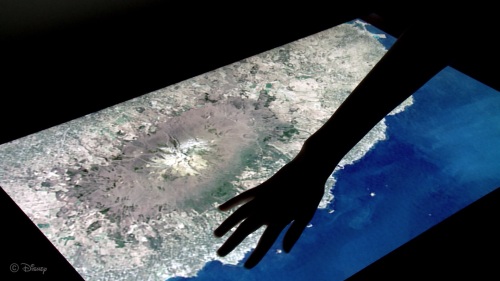A new algorithm developed for the tactile rendering of three dimensional features gives users the perception of texture on otherwise completely smooth touchscreen surfaces.

The study was conducted by Disney Research, Pittsburgh, and is based on the discovery that when a user slides their finger over an actual bump, the texture of the bump is perceived by the user’s brain as a result of lateral friction forces stretching and compressing the skin on the sliding finger. This led the group to seek out ways in which they could alter the amount of friction between the user’s fingertip and the surface of a touch screen device so as to simulate the feel of a wide variety of objects and textures without ever physically adjusting the touchscreen surface itself.
“Our brain perceives the 3D bump on a surface mostly from information that it receives via skin stretching,” said Ivan Poupyrev, who directs Disney Research, Pittsburgh's Interaction Group. “Therefore, if we can artificially stretch skin on a finger as it slides on the touch screen, the brain will be fooled into thinking an actual physical bump is on a touch screen even though the touch surface is completely smooth.”
The team used electrovibration to modulate the friction between the user’s finger and touch surface via electrostatic force. They then created and validated a psychophysical model that simulates the friction forces perceived by the human finger when it slides over a real bump.
In order to render a two-dimensional object with three-dimensional textures, the group incorporated the aforementioned model into an algorithm that modulated frictional forces upon the sliding finger at specific instances along the finger’s trajectory that matched the tactile properties of the visual content being displayed on the touch screen.

“The traditional approach to tactile feedback is to have a library of canned effects that are played back whenever a particular interaction occurs,” said Ali Israr, a research engineer at Disney Research who was the lead on this project. “This makes it difficult to create a tactile feedback for dynamic visual content, where the sizes and orientation of features constantly change. With our algorithm we do not have one or two effects, but a set of controls that make it possible to tune tactile effects to a specific visual artifact on the fly.”
“Touch interaction has become the standard for smartphones, tablets and even desktop computers, so designing algorithms that can convert the visual content into believable tactile sensations has immense potential for enriching the user experience,” Poupyrev added. “We believe our algorithm will make it possible to render rich tactile information over visual content and that this will lead to new applications for tactile displays.”
Story via disneyresearch.com
Advertisement
Learn more about Electronic Products Magazine





